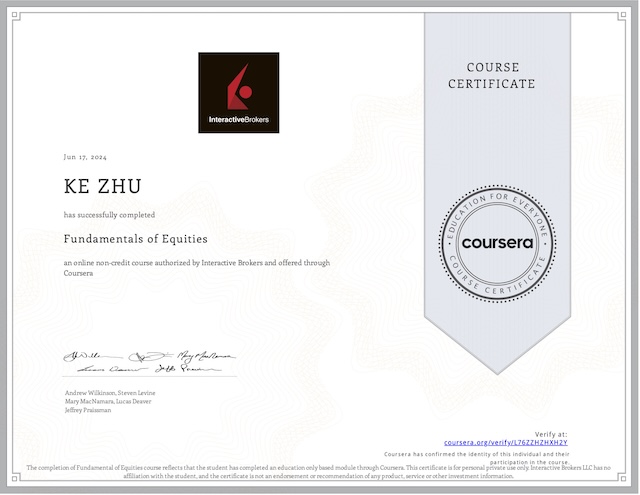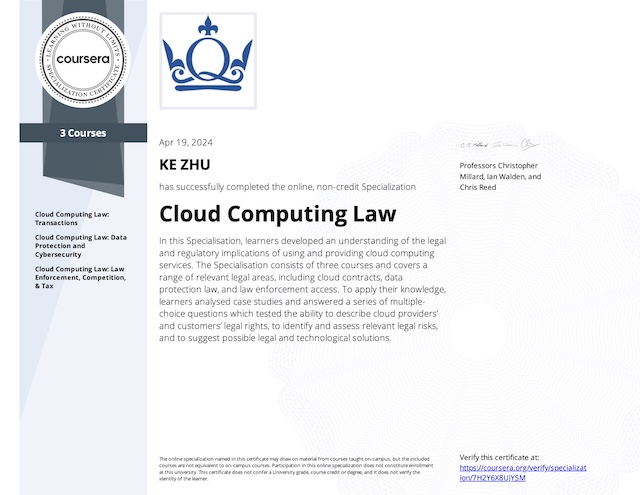Recall there are a few key items when evaluating a property transaction:
Realized gain or loss = Amount realized - Adjusted basis
Amount realized = Cash received
+ Fair market value property received
+ Relief of seller's debt
- Selling expenses
Adjusted basis = Original basis
- Cost recovery deduction
+ Capital improvementsAlso recall the holding period of a property technically begins on the day after the property is acquired and includes the day of properties disposition. Short-term holding period is where an asset is held for one year or less. Long-term holding period is where an asset is held for more than one year.
| Nontaxable exchange (e.g like-kind exchange) | Holding period includes the holding period of both the old asset and the new asset. |
| Nontaxable transactions involving carryover basis (e.g. gift gain basis) | Add former owner’s holding period to current owner’s holding period. |
| Inherited property | Long-term no matter how long the asset is actually held by the heir. |
If some amount of gain or loss is recognized from a property transaction (that is we have to report it on tax return), what is the character (ordinary or capital) of that gain or loss?
Character of Gain or Loss
The character of the gain or loss is based on the type of property that is sold or exchanged. There are three types of assets:
- Ordinary assets
- Capital assets
- Section 1231 assets
Character then determines how gain or loss item is treated for tax purpose. In particular, it’ll drive:
- whether a recognized gain will be taxed at
- the lower preferential tax rates (say for long-term capital gain), or
- the higher ordinary tax rates (say for short-term capital gain)
- whether a recognized loss is
- deductible against ordinary income, or
- ordinary losses are typically deductible immediately
- deductible against other capital income
- for individuals, net capital losses are only deductible to the extent of $3,000 per year
- any losses that are greater than $3,000 are carried forward indefinitely and can be applied against future capital gain income
- deductible against ordinary income, or
Ordinary Assets
Ordinary assets are created or used in a taxpayer’s trade or business, includes items such as inventory and accounts receivable. Ordinary assets are also business assets that are held for one year or less (short-term), even if it’s equipment.
| If sold at | Character is | |
| Gain | Ordinary | Taxed at ordinary rates (use tax tables in form 1040) |
| Loss | Ordinary | Deduct against other ordinary income |
Capital Assets
Capital assets are the assets that are held for investment, the production of income or personal use. This category includes assets such as stocks, bonds, a house or a personal car.
- Capital assets are NOT property used in a trade or business, for example, inventory or accounts receivable, or notes receivable acquired from the sale of services or property. So. a capital asset is not an ordinary asset.
- Capital assets are NOT depreciable property or real estate used in a business, which is a section 1231 property. So capital asset is not a section 1231 asset.
- Capital assets are NOT copyrights, NOT literary musical or artistic compositions, and NOT letters or similar property held by the creator or producer.
- Capital assets are NOT US government publications
- Capital assets are NOT supplies of a type regularly used or consumed in the ordinary course of business.
Patents
The sale of patents can trigger automatic long-term capital gains or loss treatment,
- regardless of whether the patent is a capital asset and
- regardless of the length of time the patent is held.
Now to qualify for such treatment;
- All substantial rights to the patent must be transferred upon sale and only the holder of the patent is entitled to the special treatment.
- To be a holder, the person must be the creator or purchaser of the patents. Now, if you’re a purchaser of a patent, the patent must be purchased from the creator before the patent is reduced to practice. Basically before it’s developed for sale in order for a purchaser to also be a holder.
- The holder must be an individual, not a corporation. If the creator is employed by someone else, the creator’s employer does not qualify as a holder.
Netting Process
The netting process is the most important aspect in determining the gain and loss amounts in tax treatment. We’re trying to figure out the character of our gains and losses during the year on all of the assets we’ve sold that year.
When there are 2 or more assets, we could calculate the net gain or loss of them.
- Short term capital:
- When gain > loss ⟹ Net short term capital gain ⟹ taxed at ordinary rates
- When loss > gain ⟹ Net short term capital loss ⟹ ordinary tax deduction up to $3000 for AGI
- Long term capital:
- When gain > loss ⟹ Net long term capital gain ⟹ (it depends …)
- When loss > gain ⟹ Net long term capital loss ⟹ ordinary tax deduction up to $3000 for AGI
Ultimately long-term capital gains will be taxed at either 0%, 15%, or 20%. Which rate it is taxed at depends on where a taxpayer’s taxable income falls on a separate tax rate schedule used to determine the applicable long-term capital gains rate.
There are other long term capital gain tax rates as well:
- 25% (or “unrelated section 1250 gain” rate) related to gain from disposition of some section 1231 assets.
- 28% related to the sale of collectibles (artworks, antiques, rugs, metals, gems, stamps, alcohols, coins, historical objects.
Qualified Dividends
Recall the qualified dividends or dividends paid from domestic and certain foreign corporations are eligible for the 0%, 15%, or 20% preferential tax rate. However, this treatment is technically separate from the netting procedure. It’s not a category that we’ll worry about.
- If there is a net long term capital gain, add dividends to the gain to determine total income subject to 0%, 15%, or 20% preferential tax rate.
- If there is a net short term or long term capital loss, deduct the net capital loss up to $3000 per year (and carry forward the rest), but dividends will still be taxed at 0%, 15%, or 20% preferential tax rate.
The point here is that although these qualified dividends are technically taxed at the same preferential tax rates as long-term capital gains, we’re not actually using them in the netting process. Importantly, we’re not able to net them with short or long-term capital losses.
3 Key Steps
In the first step, after we calculate the recognized gains or losses on the property transactions, we need to classify those gains and losses into the proper category based on the type of asset we just sold:
- Ordinary item
- Short term capital item
- 28% long term capital item
- 25% long term capital item
- 0% / 15% / 20% long term capital item
- section 1231 item
In the second step after we’ve put all those gains and losses in the right category, we can go ahead and net all those items within each category. After we’ve done that, we’re left with at most one number in each category which represents the net gain or loss for that category.
In our third step is net the numbers across categories according to the netting procedure. This netting map will kick in.
Netting Map
The key with this netting map is that when we net short-term with long-term capital gains and losses, we must move from left to right across the columns in this map. To the extent we have opposing signs and connect them or offset gains in one column with losses in another column.
| Short-Term Capital Gain/Loss (STCG/L) | Long-Term Capital Gain/Loss (LTCG/L) 28% | (LTCG/L) 25% | (LTCG/L) 0/15/25% | Ordinary Income or Loss |
- Work out LTCG/L columns before offsetting against STCG/L, Net within each group first.
- Short-term
- If net STCG, it is taxed at ordinary tax rates.
- If net STCL, it can offset net LTCG (first against 28%, then 25%, then 0/15/25%). Any excess loss is deductible up to $3,000.
- Long-term
- If opposite sign in 28% and 25% columns, offset.
- If any remaining 28% and 25% column is opposite signs with the 0/15/20% column, offset.
- If 0/15/20% is a loss, and both 28% and 25% columns are gains, offset first against 28% gain, then 25% gain.
- If net LTCG, it may be 28%, 25%, and / or 1/15/20% gain.
- If net LTCL, it canbe used to offset STCG. Any excess loss is deductible up to $3,000.
- If opposite sign in 28% and 25% columns, offset.
- Ordinary income / loss includes net STCG, as are section 1245 and 1250 recaptured gains.
Section 1231 Assets
What Section 1231 refers to is depreciable personalty and depreciable and non-depreciable realty, as well as land used in a trade or business, or for the production of income. The asset must be held for more than one year. Section 1231 assets receive extremely favorable tax treatment:
- If you sell a Section 1231 asset at a gain, it gets the long term capital gain treatment, the gains are taxed at preferential rates.
- If you sell a Section 1231 assets at a loss, that loss is an ordinary loss, fully deductible, and can be used to offset ordinary income, not subject to that $3,000 limitation that applies the capital losses.
Look-back Rule and Reclassification Exercise
Taxpayers might want to group all the losses in one year to get the ordinary deduction that year, then group all the gains in the next year to get preferential tax rates in the next year. This is a time game.
In order to prevent kinds of “timing games” to get both benefits of maximizing your deduction, and minimizing your tax rate, to the extent you sold Section 1231 assets at a gain this year, the taxpayer will have to look back to the prior five years to check if any Section 1231 assets were sold at a loss.
IRS will effectively net the two years together, so that the character of any of the Section 1231 gain will be treated not as a preferential item (taxed at preferential rates), but actually as an ordinary income item (taxed at ordinary tax rates).
If there was a Section 1231 loss in the previous five years, net 1231 gain in the current year will be offset by the 1231 losses that were deducted in the previous five years as ordinary losses. So the amount of current year, 1231 gain that is offset by prior years as 1231 losses is treated as ordinary income, instead of receiving long-term capital gains treatment. Any current year net 1231 gain that survives (or is not subject to) the lookback rule is treated as a LTCG taxed at 0/15/20%.
However, if the taxpayer had sold all the loss and gain property in the same year, they would have offset each other because they’d be in the same category. So this look-back loss rule effectively nets these gains and losses across years in order to specify the correct character of the current year’s net Section 1231 gain.
Netting Map
How the section 1231 assets fit into our netting map? We’ll add one column to the left of the short-term capital gain or loss column.
| Section 1231 Gain / Loss | Short-Term Capital Gain/Loss (STCG/L) | Long-Term Capital Gain/Loss (LTCG/L) 28% | (LTCG/L) 25% | (LTCG/L) 0/15/25% | Ordinary Income or Loss |
- If we have a net section 1231 gain, check whether we had any section 1231 losses in the last five years. If we did, then
- Any net section 1231 gains up to the last five years worth of section 1231 losses will be classified as ordinary income, and thus move to the rightmost column (ordinary income or loss).
- Any net section 1231 gain is larger than any section 1231 losses over the last five years, will eventually moved to the 0/15/20% long-term capital gain column.
- if we obtain a net loss in the section 1231 column, it is simply an ordinary loss, you’ll take that loss and put it in the ordinary loss column.
Depreciation Recapture
Depreciation recapture refers to a re-characterization of income. Basically, we re-characterized gains (but not losses) on the sale of Section 1231 assets. The computation of depreciation recapture depends on the type of Section 1231 assets sold. It changes character, not amount of gain recognized on the sale.
There are actually 3 types of section 1231 assets:
- Pure section 1231 assets: non-depreciable realty (i.e. land)
- Not subject to any depreciation recapture because the asset is not depreciable in the first place
- Section 1245 assets: depreciable personalty and intangible used in trade or business.
- Section 1250 assets: depreciable realty used in trade or business (office building, warehouse, etc).
Section 1245 (Full Recapture)
What section 1245 depreciation recapture does is that to the extent there’s a gain on the sale of section 1245 property. The gain will be ordinary in character to the extent the gain was created by depreciation or amortization. Recall
Realized gain
= Amount realized - Adjusted basis
= Amount realized - (Original basis - Accumulated cost recovery)In the formula that to the extent an asset has been depreciated, it will by definition make the Adjusted basis lower, which makes Realized gain larger. Remember, when a business claims depreciation deductions, the business receives an ordinary tax deduction. That is the deduction can offset ordinary income without limit.
Therefore, to the extent that business sells section 1245 property, and the gain is there because depreciation depressed the Adjusted basis to help create the gain, then the portion of the gain that’s there because of the depreciation will NOT be subject to preferential tax rates, but instead, will be recaptured and taxed at ordinary tax rates.
Therefore, the Section 1245 depreciation recapture is calculated as the lesser of Recognized gain and Accumulated cost recovery (all the accumulated depreciation claimed on the sold property) and is then re-characterized as ordinary income. This is known as a full recapture because any and all of the depreciation that drove the gain will be taxed at ordinary rates.
To the extent, any Recognized gain that is greater than the accumulated depreciation on the asset, then the remaining net gain is indeed a Section 1231 gain taxed at the 0/15/20% preferential tax rate.
Finally, if a section 1231 asset is sold at a loss, then it’s just a regular section 1231 loss. There is no depreciation recapture on section 1231 assets sold at a loss.
Recognized gain = Selling price - Adjusted basis
1231 gain = Selling price - Original cost
Depreciation = Original cost - Adjusted basis
| ⟸ Selling price 1
|
Original cost ⟹ |
| ⟸ Selling price 2
|
Adjusted basis ⟹ |
| ⟸ Selling price 3
|
Zero 0| When | Recapture |
| Selling price ≥ Orginal cost ≥ Adjusted basis | Depreciation = Original cost – Adjusted basis |
| Original cost ≥ Selling price ≥ Adjusted basis | Recognized gain = Selling price – Adjusted basis |
| Original cost ≥ Adjusted basis ≥ Selling price | No recapture since we have a loss |
Netting Map
How does depreciation recapture fit into the netting map?
| Section 1231 Gain / Loss | Short-Term Capital Gain/Loss (STCG/L) | Long-Term Capital Gain/Loss (LTCG/L) 28% | (LTCG/L) 25% | (LTCG/L) 0/15/25% | Ordinary Income or Loss |
- On the leftmost side, the net 1231 gain that survives any look-back losses and survives any depreciation recapture as well will be moved to the 0/15/20% long-term capital gain column.
- If there is a net 1231 loss, we just move it to the ordinary column. We don’t have to worry about depreciation recapture at all.
- At the rightmost column, you can see that Section 1245 recaptured gains (depreciation) go directly into the ordinary income column. We actually do not place it in the 1231 column first.
Section 1250 (Partial Recapture)
The Section 1250 recapture provision states that only amounts of additional depreciation, that is, amounts in excess of straight line depreciation are subject to re-characterization as ordinary income.
Depreciation recapture
= MACRS depreciation
+ Bonus depreciation
+ Section 179 depreciation
- Straight-line depreciationThis is known as a partial recapture because we’re only concerned about any excess depreciation of a straight line. Only applies to gains, not losses. Depreciation recapture under section 1250 rarely applies unless some form of acceleration depreciation was used.
- Recaptured gain (very rare) is subject to ordinary income tax rates.
- Unrecaptured gain (much more common, attributable to straight-line depreciation of realty) is subject to the special 25% long term capital gain rate.
The Section 1250 unrecaptured gain is calculated as the lesser of Recognized gain and Accumulated straight-line cost recovery. It looks similar to section 1245 recapture, but there are 2 major differences:
- Section 1245 recapture considers accelerated depreciation too.
- Unrecaptured section 1250 gain is section 1231 gain that is taxed at special 25% rate, not ordinary rate.
Netting Map
How does depreciation recapture fit into the netting map?
| Section 1231 Gain / Loss | Short-Term Capital Gain/Loss (STCG/L) | Long-Term Capital Gain/Loss (LTCG/L) 28% | (LTCG/L) 25% | (LTCG/L) 0/15/25% | Ordinary Income or Loss |
- Section 1231 gain that survives any look-back losses, Section 1245 recapture and section 1250 recapture will eventually be moved into the 0/15/20% long-term capital gain column.
- Section 1231 loss would be an ordinary loss and be moved to the rightmost column.
- To the extent we have Section 1245 or 1250 recaptured gains, they will be reported directly in the ordinary column. We will not put them in the 1231 column at all.
- Finally, the middle 25 percent long-term capital gain column is only reserved for the unrecaptured Section 1250 gains. We will report them as gains in this column and then we can net with other long-term or even short-term items to the extent they have different signs.
Other Items in Netting Process
If we have a section 1231 asset that is disposed of via casualty or condemnation, it will have separate treatments:
| If net section 1231 | Move to |
| Gain or loss due to a condemnation, or Gain due to a casualty (See A in Netting map below) | Section 1231 category to net with regular section 1231 gain or loss |
| Loss due to a casualty (See B in Netting map below) | Ordinary category, DO NOT net with regular section 1231 items |
If an individual has a personal casualty gain or loss, how we treat it when we net across columns will depend on whether the individual has a net casualty gain or a net casualty loss:
| If net personal casualty | Move to |
| Gain (See C in Netting map below) | Short term column if the asset was held for 1 year or less, or Long term 0/15/20% column if the asset was held for more than 1 year. |
| Loss (See D in Netting map below) | Deductible as a from AGI deduction if it is attributable to a federally declared disaster area and if it exceeds the $100 per event floor and 10% of AGI floor. |
Netting Map
How do casualty gain or loss fit into the netting map?
| Personal Casualty Gain or Loss | Section 1231 Casualty Gain or Loss | Section 1231 Condemnation Gain or Loss | Section 1231 Gain / Loss |
| If net gain, … C | If net gain, … A | If net gain, … A | … |
| If net loss, … D | If net loss, … B | If net loss, … A | … |
Section 1239 Gains
Any recognized gain on a sale or exchange between related parties is ordinary income if the property sold is depreciable in the hands of the transferee. This provision is designed to prevent taxpayers from selling depreciable property gains to related parties, where the gain to the seller could potentially be taxed a preferential rates, all the while providing depreciable basis to the acquiring related party, that they could then use to generate ordinary depreciation deductions.
Net Investment Income Tax
Individuals with modified adjusted gross income above a certain threshold are subject to a Net Investment Income Tax of 3.5%, which is an addition to any ordinary or preferential tax rate that may apply to the taxpayers investment income.
Investment income for purposes of this tax, includes entrusts, annuities, royalties, dividends, and capital gains. So in effect, the Net Investment Income Tax increases the long-term capital gain’s marginal tax rate for higher income individuals, from a top rate of 20% to a top rate of 23.8%.
For certain types of investment income that are taxed at ordinary tax rates, such as interest income annuities, the marginal tax rate on that income is increased to 40.8%, which is the new top, ordinary tax rate is 37% starting in 2018, plus the 3.8% in the Net Investment Tax.
Threshold is not adjusted for inflation:
| Married Filed Jointly and Surviving spouse | $250000 |
| Married Filed Separately | $125000 |
| Other filing statuses | $200000 |
The tax is lesser of:
- 3.8% of the net investment income, or
- 3.8% of the modified AGI exceeds the applicable threshold
My Certificate
For more on Character of Gains and Losses, and The Netting Process, please refer to the wonderful course here https://www.coursera.org/learn/federal-taxation-business
Related Quick Recap
I am Kesler Zhu, thank you for visiting my website. Check out more course reviews at https://KZHU.ai



